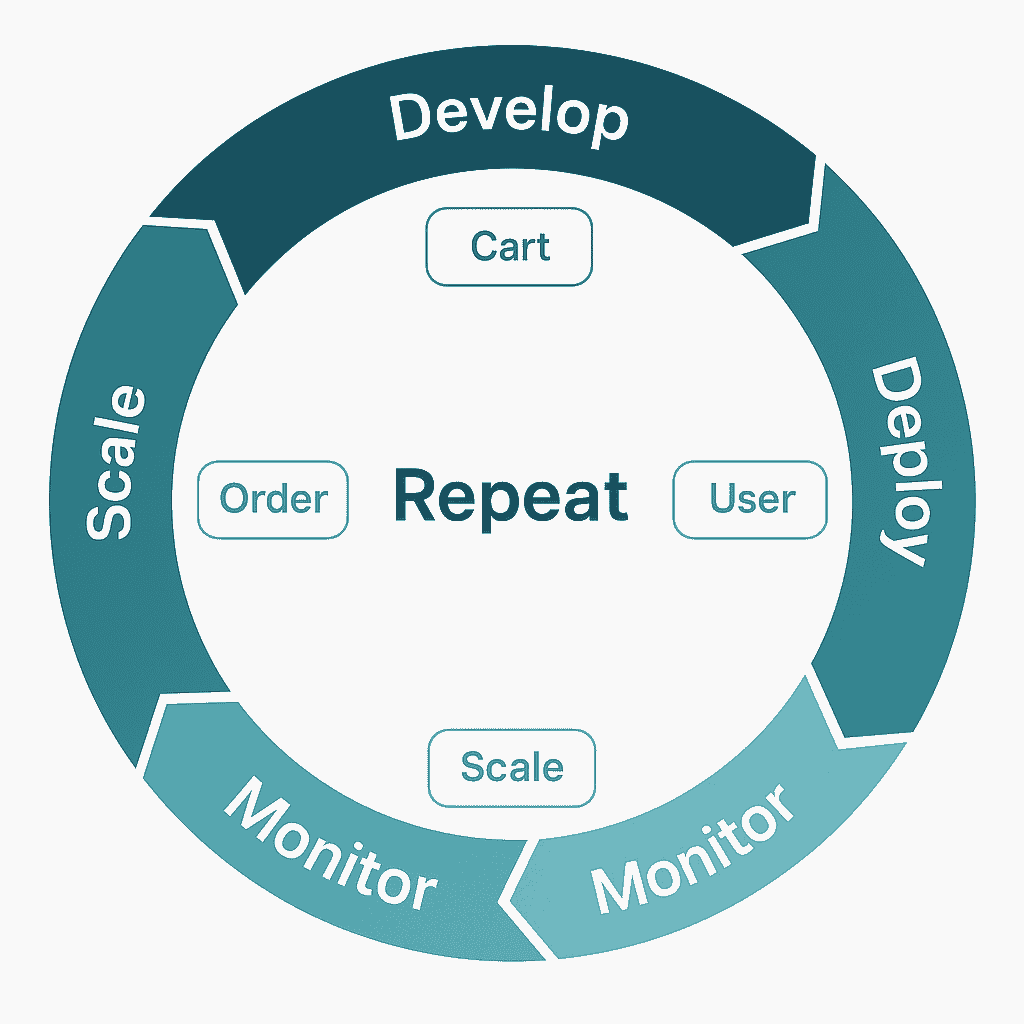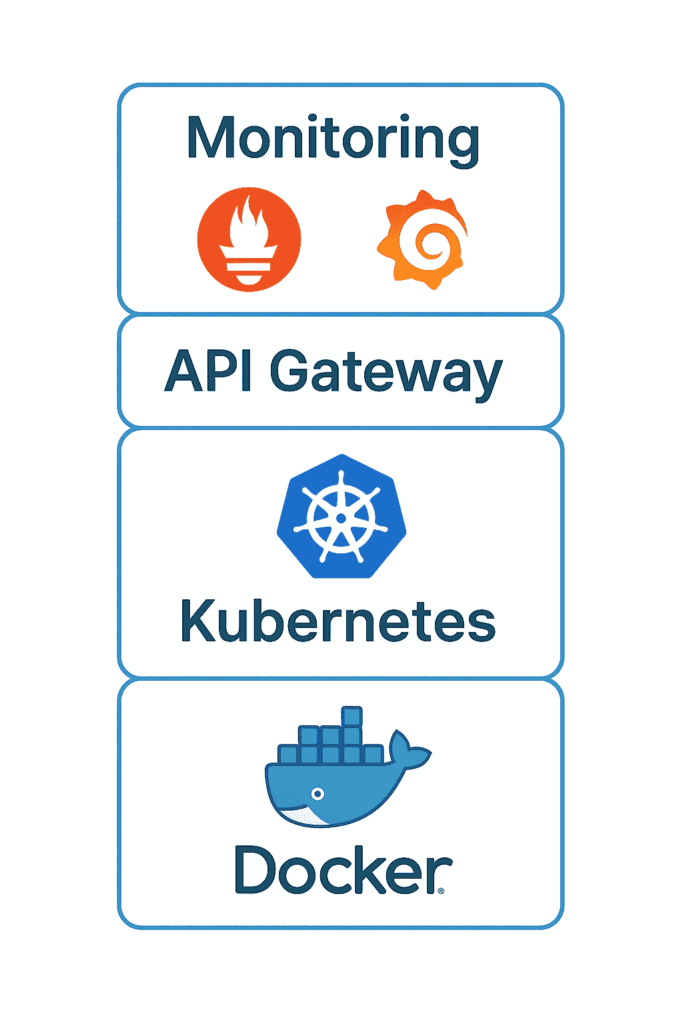- By Kiwi Commerce
- 10 Jul, 2025
- eCommerce Development
Understanding Microservices Architecture: A Beginner-Friendly Guide
In today’s fast-moving digital world, building applications that are scalable, flexible, and easy to maintain is more important than ever. That’s where Microservices Architecture comes into play — a modern approach to software development that breaks applications into small, independent services.
At Kiw Commerce, we believe in making complex technology accessible. This guide will walk you through the basics of microservices, how they work, real-world examples, common tools, and helpful visual concepts.
What Are Microservices?
Microservices is an architectural style that structures an application as a collection of loosely coupled services. Each service is independently deployable, responsible for a specific function, and communicates with other services via APIs.
Key Difference from Monoliths
- Monolithic architecture: All features are built into a single codebase.
- Microservices architecture: Features are broken into separate modules (services), each running independently.
Visual Tip:
Imagine a side-by-side image:
- Left: One large block labelled “Monolithic App” with modules (User, Product, Cart, Payment) inside.
- Right: Smaller blocks (e.g., User Service, Product Service) connected via arrows — representing microservices.
Key Components of Microservices Architecture
- Individual Services
Each microservice handles a single business function — like user authentication or payment processing. - APIs for Communication
Services talk using REST APIs, gRPC, or message queues. - Independent Databases
Each service can maintain its own database, improving modularity and fault isolation. - Containerisation
Tools like Docker and Kubernetes allow developers to deploy and scale services independently.
Visual Tip:
A system diagram with:
- An API Gateway in the centre.
- Connected to services (Auth, Cart, Product).
- Each with its own database.
How Do Microservices Communicate?
Microservices communicate in two main ways:
- Synchronous: Via HTTP (REST) or gRPC — real-time, direct interaction.
- Asynchronous: Using message brokers like Kafka or RabbitMQ — useful for event-driven systems.
Visual Tip:

Two panels:
- Left: REST communication between services.
- Right: Services exchanging messages through a central broker.
Benefits of Microservices
- Scalability
Scale only the parts of your app that need more resources (e.g., payments during sales). - Faster Deployments
Teams can update or deploy services independently without affecting the entire app. - Resilience
If one service fails, the rest continue running smoothly. - Tech Flexibility
Teams can choose different technologies for different services (Node.js for one, Python for another).
Challenges of Microservices
While powerful, microservices come with their own set of challenges:
- Higher Complexity
More services mean more dependencies and interactions to manage. - Data Consistency
Managing transactions across multiple services can be tricky. - DevOps-Driven
Requires strong CI/CD pipelines, logging, monitoring, and container orchestration.
Visual Tip:
A circular diagram showing:

- Develop → Build → Deploy → Monitor → Scale → Repeat
Each phase showing a different microservice (e.g., Cart, Order, User).
Real-World Examples
Here’s how leading companies use microservices:
- Netflix: Runs hundreds of services handling everything from video delivery to user preferences.
- Amazon: Powers services like product search, recommendation engine, and payment processing.
- Uber: Booking, payments, location tracking — each runs as a separate service.
Common Tools Used in Microservices
- Docker – Packages each service into a lightweight container.
- Kubernetes – Automates deployment, scaling, and management of containers.
- API Gateway – Manages all incoming traffic to your services.
- Service Mesh (e.g., Istio) – Adds observability, security, and traffic control.
Visual Tip:

A vertical stack:
- Base: Docker
- Layer above: Kubernetes
- Then: API Gateway
- Top: Monitoring with tools like Prometheus or Grafana
Final Thoughts from Kiw Commerce
Microservices architecture can seem complex at first, but once understood, it offers unbeatable advantages in scalability, agility, and resilience.
At Kiw Commerce, we’re passionate about helping businesses unlock the potential of modern software architecture. Whether you’re starting fresh or looking to transition from a monolith, microservices provide a future-proof solution for growth.



